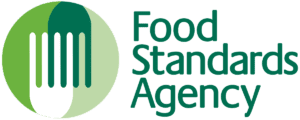If you own a food business, you must be prepared for inspections by Environmental Health Officers (EHOs) to assess food hygiene standards. The idea of an environmental health inspection can seem daunting, but it can help if you know what EHOs will be looking for.
 The Food Standards Agency recently shared a helpful article with great advice for what to expect during a food inspection. Here, we highlight some key points to ensure you’re fully equipped.
The Food Standards Agency recently shared a helpful article with great advice for what to expect during a food inspection. Here, we highlight some key points to ensure you’re fully equipped.
The role of EHOs
EHOs have the authority to conduct unannounced food hygiene inspections at any time to evaluate your premises’ cleanliness and safety practices. They may also visit when you first set up and register your business. The primary objective of these inspections is to ensure confidence in the management of the business and verify that all relevant documentation is in place. EHOs will assess factors such as the suitability of the premises for a food business, the layout and structure of the establishment, and the competence of the Food Business Operator and staff in carrying out their roles safely.
Frequency of inspections
The Food Standards Agency (FSA) assigns a food hygiene rating to each establishment based on the inspection findings. A rating of 5 indicates excellent food safety standards, which should be the aim of every food business. The frequency of inspections varies based on several factors, including the risks to public health. High-risk businesses are typically inspected every six months until the risk is reduced, while lower-risk premises may be inspected every two years. Establishments classified as very low risk, such as those with a 5-star food hygiene rating, may not be inspected for over two years.
The inspection process
During a food inspection, the EHO will initiate the process by asking questions about your business activity to identify any high-risk activities. They will also review records to ensure that documented systems are being followed. The physical inspection involves assessing the premises for disrepair, satisfactory facilities (such as staff toilets and water supply), and proper maintenance of temperature-controlled equipment (fridge temperatures, hot cabinets, etc). Additionally, the inspector will talk with management and staff to address business risks and evaluate the controls in place, including staff training.
Following an inspection
Following the inspection, a food business risk rating is determined, which determines the date of the next inspection. Additionally, a food hygiene rating may be provided if appropriate. To establish a good working relationship with the local authority, the FSA advises business owners to contact them before starting to trade. This allows you to discuss your plans, seek advice and build a solid connection from the beginning.
Want to know more about what happens during an Environmental Health inspection?
Awareness of what to expect during a food business inspection is crucial for business owners. By understanding the role of EHOs, the frequency of inspections, and the inspection process itself, you can ensure your business is prepared to meet and exceed food hygiene standards. Establishing a good working relationship with your local authority is also essential.
